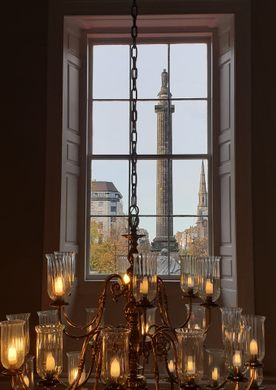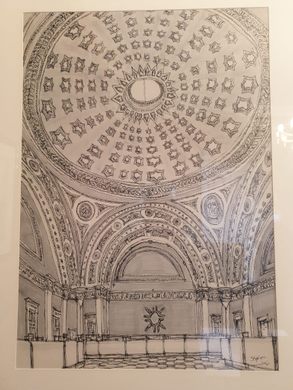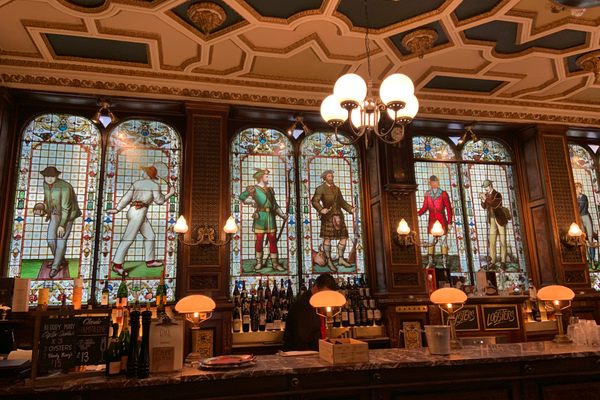Dundas House
This stately bank building hides a spectacular star-studded ceiling.
Many people are familiar with the expression “never judge a book by its cover.” Well, the same could be said of buildings. Certainly, that is the case with the interior of Dundas House, which is currently occupied by The Royal Bank of Scotland. Step inside the foyer, and you’ll feel as if you’ve been instantly transported back to the 18th century, to the Scottish Age of Enlightenment.
Dundas House once belonged to Sir Laurence Dundas, hence its name. It was constructed in the Neoclassical style by Sir William Chambers in 1774. The building contains many excellent features, but it is the star-studded ceiling created by John Dick Peddie in 1857 that’ll grab your attention. As this structure was intended to be a residence, this arched roof acted as the ceiling to a massive conservatory.
Dundas House has pride of place on the eastern end of George Street, just across from St. Andrew’s Square in the New Town. That is because Dundas himself was a crafty businessman and took advantage of purchasing the property prior to the construction of the New Town. The site originally intended for St Andrews Church, an accompanying bookend church to the one at the opposite end of George Street. Perhaps it is just desserts for his trickery that Sir Laurence Dundas didn’t live more than a few years at this stately address, as he died in 1781.
Today, visitors are welcome to take a look at the many fine details of this manor, including a display that gives a history of the building. You can even purchase a keepsake one-pound note with a star ceiling engraved on it.
In recent years, a concerted effort is being led by museums, charities, and governmental agencies to address the impact the slave trade has had on enriching certain individuals who have had buildings and streets named after them. Sir Laurence Dundas and his relatives were no exceptions when it came to reaping the financial benefits from this horrendous period of human history. Besides owning several plantations in the Caribbean, Dundas himself was responsible for extending the slave trade another 15 years after the passing of the Slavery Abolition Act of 1833.
Know Before You Go
As this is a bank it has hours of operation: M - F from 9:15 - 5:30 (10 AM on Wednesday), Saturday 9:15 - 3 PM, closed on Sundays. You don't have to be an account holder of RBS to enter the building.
Plan Your Trip
The Atlas Obscura Podcast is Back!




























Follow us on Twitter to get the latest on the world's hidden wonders.
Like us on Facebook to get the latest on the world's hidden wonders.
Follow us on Twitter Like us on Facebook